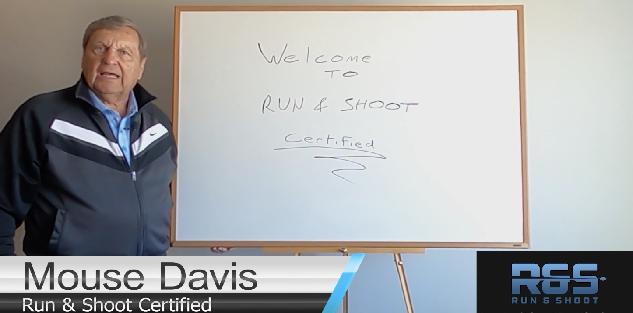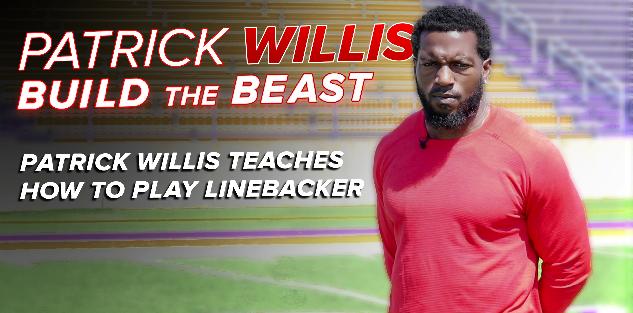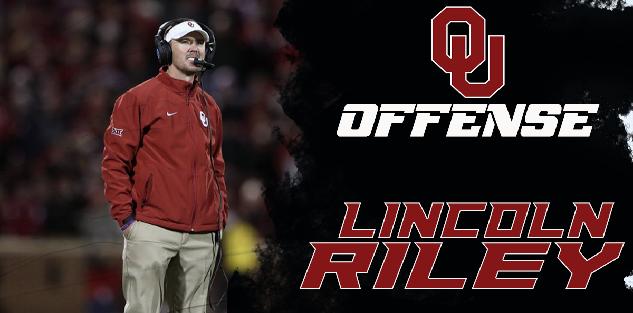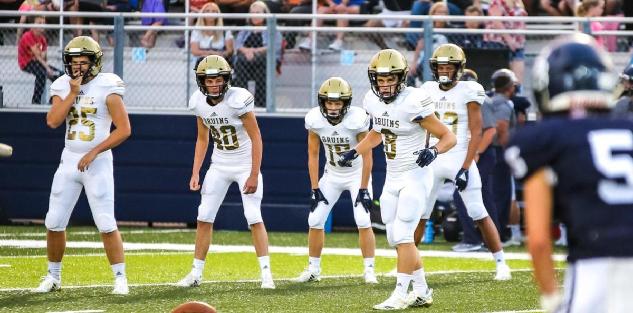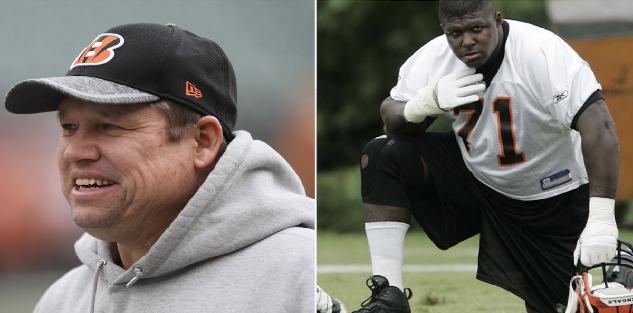Featured courses
- Jim Thorpe Award Winner Jahdae Barron’s 4 Drills for Dominating Receivers by Grant Young
- 5 Tips to Improve Your Football Game Plan by Andrew Dohre
- Game Changer RPO Football : Wing-T Offense by Andrew Dohre
- Mastering the Pass Rush: Expert Drills and Progression Tips from UCLA’s Coach Ikaika Malloe by Andrew Dohre
- 3 SPO’s to Protect the Passing Game and create opportunities in space by Keith Grabowski
- The Art of Running the Corner Route- Coaches and Players Prespectives by CoachTube Staff
- Evolve your Defense with Quarter, Quarter Half to Stop RPO by Coach Grabowski
- Top 10 College Football Players to Watch for in 2022 by Alec Burris
- Clemson vs. Syracuse Matchup of the Week by Keith Grabowski
- Sprint Out Passing: Move the Pocket for Success by Keith Grabowski
- Unlocking the True Potential of Your Special Teams Play by Keith Grabowski
- The Most Important Components of Air Raid by Keith Grabowski
- 4 Plays that Benefit from Bunch Formations by Keith Grabowski
- 3 Third Level RPOs for Explosive Plays by Keith Grabowski
- The Role of the Screen Game in Explosive Offense by Keith Grabowski
- The Chess Match: Win on the Perimeter (Part 1) by Coach Grabowski
- Unlocking the Power of Gap Manipulation to Limit Explosive Plays by Keith Grabowski
- TCU’s 3-3-5 and facing bigger personnel by Keith Grabowski
- Elevating Your Team: Strategies from Coach Matt Ruhle by Keith Grabowski
- 7 RPO’s for your playbook by Coach Keith
- Beyond Quarters - The Need For Additional Coverage Concepts by Keith Grabowski
- 5 Core Offensive Priniciples for a Winning Football Formula by Keith Grabowski
- Win Downfield - Attacking Different Areas Deep with 3rd Level RPO by Coach Grabowski
- WAKE FOREST’S UNIQUE RPO GAME by Keith Grabowski
- Adjustments to Defeat the Tite Front by Keith Grabowski
- Attack Defenses with The Versatile Y-Cross Concept by Keith Grabowski
- Play Action is a Cheat Code! - 5 Play Action Concepts to Increase Your Expected Points by Keith Grabowski
- Question from Rutgers OC - What does your offense say about your coaching? by Keith Grabowski
- Gap Schemes vs. Tight Fronts, Play Action Shots and Misdirection by Coach Grabowski
- Setting up your young Qb for success by Keith Grabowski
- The Hot Gap plus 3 Gap Scheme RPO’s to Stress the Defense by Keith Grabowski
- How Football Coaches Can Build A Game-Changing Special Teams Unit by Grant Young
- Master the Art of Quick Passing for High Completion Percentages by Keith Grabowski
- How to Be an Influential Football Coach by Grant Young
- How to Maximize Tackling Efficiency within Scheme by Keith Grabowski
- Offensive Drills of the Week by Keith Grabowski
- How a Stoplight Can Make Your Fly Sweep Takeoff by Keith Grabowski
- Keep your Drills Fresh and Your Skills Developing - Offense by Keith Grabowski
- Coach Kevin Kelley, Outside The Box by Keith Grabowski
- Want your defense to get off the field after third down? Sims and Creepers are the answer! by Keith Grabowski
- Create More Turnovers with Circuit Training & Win More Games! by Keith Grabowski
- Devastate the Defense with TE RPOs by Keith Grabowski
- Red Zone adjustments by Keith Grabowski
- CoachesClinic.com Featured Matchup: Cincinnati vs Indiana by Caleb Hopkins
- 3 NFL ZONE RUN PLAYS FROM WEEK 7 by Alex Kirby
- Sonny Dykes Teaches You How to Put Together an Offense by Coach Grabowski
- FIVE REASONS TO RUN THE 3-3 DEFENSE by Alex Kirby
- Getting Your Defense Ahead - 1st and 2nd down Pressures from Noah Joseph by John Grayson
- Chad Morris Teaches How To Builds an Offense by Coach Grabowski
- Get Your Offense a +1 With the QB Run Game by Coach Grabowski
- Are You Causing a 14 Point Turnaround...Against Your Team? by Coach Grabowski
- Learn How to Improve Your Offense with USC’s “Harrell Effect” by Coach Grabowski
- The Power of Influence - Rick Jones, Mizzou by Coach Grabowski
- Easy QB Runs to Drive Defenses Crazy by Ryan Eisenberger
- How many different ways can you make the defense cover everyone? by Ryan Eigenberger
- Win Passing Downs with Creepers and Sims by Coach Grabowski
- Always have a plan to play your best 11 by Keith Grabowski
- Dominate the Defense with Double Teams by Coach Grabowski
- Buffalo OC teaches his model for game planning by Keith Grabowski
- Put your 3 Deep Coverage in a Better Position with Zone Alert Rotations by Coach Grabowski
- 5 Keys to Using Trick Plays by Coach Grabowski
- Learn from 'Juggernaut' Offense by Keith Grabowski
- Bob Wylie - Offensive Line Breakdowns by Coach Grabowski
- Utilizing the Hybrid Linebacker to take away Offensive Advantages by Coach Grabowski
- Always have a plan to play your best 11 by Keith Grabowski
- Coachesclinic.com Featured Matchup: #6 Oklahoma vs #21 Texas by Caleb Hopkins
- Easy for You - Difficult for Them Adjustments by Keith Grabowski
- Coachesclinic.com Featured Matchup: Davidson College vs Presbyterian by Caleb Hopkins
- Week 5 National High School Football Rankings by Keith Grabowski
- Protecting Aaron Rodgers (and your own QB) by Caleb Hopkins
- Defensive Drills of the Week by Keith Grabowski
- Woo Pig - Add a wrinkle with these Arkansas Downhill Run Variations by Keith Grabowski
- Coachesclinic.com Featured Matchup: #7 Cincinnati vs #9 Notre Dame by Caleb Hopkins
- Offensive Drills of the Week by Keith Grabowski
- Coach Jason McEndoo Teaches #12 Oklahoma State’s Top Running Play by Keith Grabowski
- Adjustments - Attach Screens to your best plays, defend star receivers, & movement to stop the run by Keith Grabowski
- Coachesclinic.com Featured Matchup: Army vs #16 Wake Forest by Caleb Hopkins
- How To Implement A Running-Back-By-Committee Scheme by Brandon Ogle
- How To Become The Most Feared Offensive Lineman In Your League by Chrisian Benavides
- Wylie, McNally and Alexander Key Coaching Points on the Wide Zone Play by Keith Grabowski
- #21 Coastal Carolina’s play that is a whole offense within itself by Keith Grabowski
- 4 Plays that Benefit from Bunch Formations by Keith Grabowski
- Best Mesh Concept Plays by Ron McKie
- Forming Families For Football by Darryl Page
- Top 5 Things Coaches Should Strive To Get Out Of Spring Camp by Darryl Page
- 10 Tips To Know Before Attending Football Camps by James Breland
- Offensive Line Drills by Rick Bouch
- You’re a captain, now what? 5 Tips to bring your team together and establish yourself as a true leader by Lester Crafton
- COACHING THE 4-2-5 DEFENSE VS SPREAD TEAMS by Alex Kirby
- Gifts From Grinch by Coach Grabowski
- A Package to Help You Win Mid to Late Season by Coach Grabowski
- The Future of American Football: How to Run the Spread Offense by Coach Scott
- Chris Ash teaches Longhorn Tackling by Coach Grabowski
- The misunderstood Yet Powerful Run Scheme - Duo by Coach Keith
- THE GUS MALZAHN QUARTERBACK COUNTER PLAY by Alex Kirby
- FIVE TIPS FROM GUS MALZAHN ON HOW TO BUILD YOUR PLAYBOOK by Alex Kirby
- LITTLEST KID ON THE FIELD TRUCKS LINEMAN – YOU CAN’T MAKE THIS STUFF UP by Jacob
- HOW TO MAXIMIZE YOUR OFFSEASON FOOTBALL TRAINING by Dominic
- BAD CALL, GREAT COACH: THIS IS WHY PLAYERS LOVE PETE CARROLL by Jacob
- How to Get Recruited for Collegiate Sports by Brandon Ogle
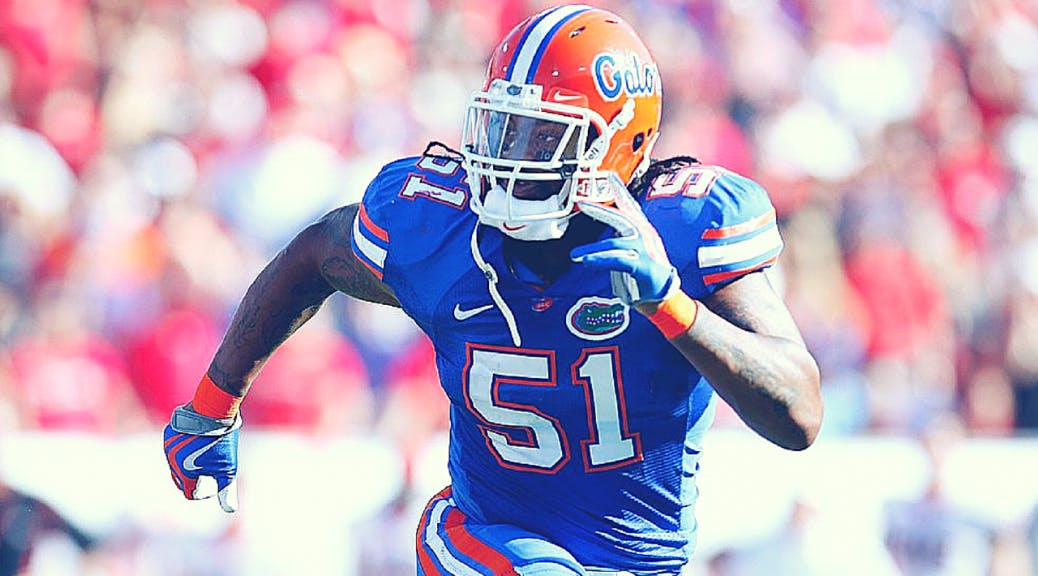
FIVE REASONS TO RUN THE 3-3 DEFENSE
- By Alex Kirby
As offenses have become faster and have found new ways to challenge defenses in every area of the field, defenses have constantly needed ways to adapt. Some times they’ve created new ideas, other times they’ve simply reached back to schemes that have already existed, and adjusted them to fit their needs.
The 3-3 defense is as effective a scheme as there is in football today, partially because it’s not as widespread as the more common 4-3 or 3-4 defensive schemes. As a former offensive coach I can tell you that regardless of talent level, the 3-3 defense was one of my least favorite schemes to prepare for because you never knew what you would be seeing from one play to the next.
Coach Grant Cain talks about the 3-3 defense and its many variations and advantages in this video, so let’s discuss some of the key points from his talk.
1. Multiple looks and disguises
The base of the 3-3 defense is a six man box with three linebackers stacked on top of the three down linemen, but the great thing is that you can get as complex as you want with it.
You can easily create all kinds of four man fronts by either putting one your alley defenders up on the line of scrimmage, or if you’re feeling really tricky, you can line up in that base front we just talked about and slant to a four man front at the snap.
Speaking of which…
2. Almost unlimited blitzing options
When you’ve got seven or eight potential rushers on every single play, the offense can get very confused and think too much about all the threats they’re facing.
Because today’s spread offenses rely so much on reading certain defenders on option plays and certain passing concepts, the more uncertainty you can create in the quarterback’s decision making, the better. This is a great way to get the offense back on their heels, especially if they don’t see this scheme a lot from other teams they play.
Besides the amount of blitzes you have at your disposal, equally dangerous is the threat of the blitz. Even a standard four-man rush can be extremely effective in this defense because the offensive line can never be too sure who’s coming after the quarterback and who’s dropping into coverage.
It’s also a whole lot easier to disguise the coverage on the back end of the defense because of the flexibility you have in the secondary. Depending on your alignment, there could be anywhere from 3-5 defensive backs in a position to play deep coverage zone, to where you’re never giving the offense a clear read on what to expect once the football is snapped.
3. Almost unlimited coverage adjustments
Building on #2, because you have the ability to move so many people around before the snap, it’s equally confusing for the quarterback, especially with so many quick throws and bubble screens built in to today’s offenses.
The quarterback can never be too sure about who’s rushing and who’s dropping to cut off the throws underneath, and if he’s worried about throwing a pick, all of a sudden he’ll be far more indecisive and playing back on his heels, which is exactly what you want as a defense.
4. Better utilization of players’ abilities
The great thing about the 3-3 defense is that it’s got room for people of all sizes.
Maybe you don’t have those giant defensive lineman walking the halls at your high school that a 4-3 is built around, or maybe you’ve got a lot more speed than size on your roster.
With the sheer number of different fronts you have the ability to play in this defense, you’ve ways to plug in guys with different abilities into the scheme and they’ll still have a great chance at success.
The bottom line is, it’s really tough to find big guys who can put their hand down in the dirt, take up two gaps, and still run a respectable 40 yard dash.
As a coach, you’ve gotta take advantage of what you have, and this scheme gives you the ability to maximize the personnel you’ve got on your roster.
5. Aggressive style of play
Coach Cain talks about taking the game out of the heads of his players, and that’s exactly what this style of defense excels at.
A lot of what we talked about in this post has to do with forcing the opposing offense to start over thinking and second guessing themselves, which turns them into a far less effective unit.
The goal here is to do the opposite for your own players. Put them in a position where they can use their natural abilities and energy to fly to the football, attack the offense, and run around and have fun, and do a lot less thinking about their assignments or tiny details that keep them from playing fast.
You want your players on defense flying around as fast as possible while the offense is still chasing it’s tail and trying to figure out what’s coming next. The 3-3 defense is an excellent way to accomplish this goal.



